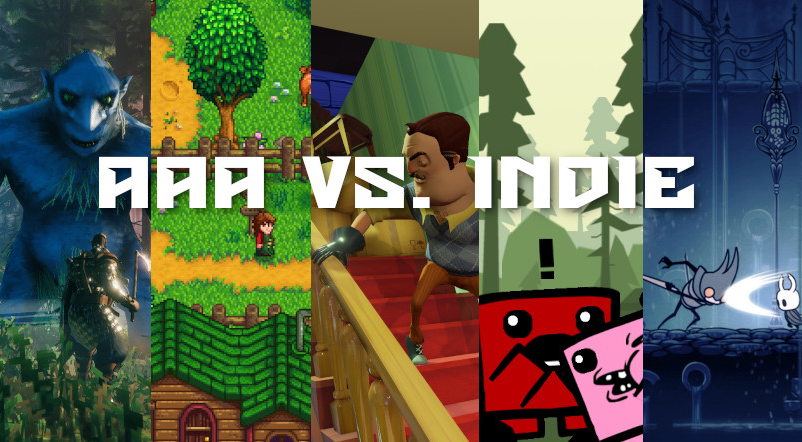The landscape of the gaming industry is diverse and dynamic, with two prominent game development approaches standing out: the high-budget, blockbuster world of AAA games and the creatively driven, often smaller-scale realm of indie games. This article undertakes a comprehensive comparative analysis of these two approaches, examining their differences in terms of development processes, creative freedom, market impact, and player engagement.
AAA Games: The Powerhouses of Production
AAA games, also known as triple-A games, are developed by established studios with substantial budgets and resources. These games are characterized by their high production values, advanced graphics, and immersive gameplay experiences. The development process of AAA games typically involves the following stages:
- Concept and Pitch: Video game development companies conceive elaborate game ideas, often building on successful franchises or exploring new concepts that have the potential to appeal to a wide audience.
- Development Teams: Large teams of professionals, including designers, programmers, artists, writers, and sound engineers, collaborate to bring the game to life. Their specialized skills contribute to the game's polished visuals, complex mechanics, and compelling narratives.
- Technological Advancements: AAA games drive technological innovation, leading to the development of cutting-edge graphics engines, realistic physics simulations, and intricate AI systems that create immersive worlds.
- Marketing and Distribution: AAA games benefit from extensive marketing campaigns and well-established distribution networks, ensuring wide visibility and availability on various platforms.
Indie Games: Nurturing Creativity on a Smaller Scale
Indie games, on the other hand, are typically developed by smaller teams or even individual creators. These games prioritize creative freedom and artistic expression, often resulting in unique and innovative gameplay experiences. The indie game development process follows a distinct path:
- Artistic Vision: Indie developers focus on personal artistic vision, often experimenting with unconventional gameplay mechanics, storytelling approaches, and visual styles.
- Agile Development: Smaller teams allow for agile development, where creators can quickly iterate and make adjustments based on player feedback and changing market trends.
- Limited Resources: Indie games operate on tighter budgets, leading to creative solutions and a focus on gameplay mechanics, narrative depth, and emotional resonance over graphical fidelity.
- Alternative Distribution: Indie games have popularized alternative distribution platforms, such as Steam, Itch.io, and indie-focused digital marketplaces, enabling direct engagement with their target audience.
Market Impact and Player Engagement
AAA games dominate the market with their high-profile releases and massive marketing campaigns. These games attract a broad audience due to their polished presentation, cinematic storytelling, and extensive multiplayer features. However, the sheer scale of AAA game development can sometimes lead to risks associated with overproduction, high financial stakes, and occasionally rushed releases that result in incomplete or buggy games.
Indie games, while often lacking the same level of financial backing and marketing muscle, have the advantage of creative freedom. This allows indie developers to explore niche genres, experimental mechanics, and thought-provoking narratives that may not find a place within the AAA game development model. Indie games frequently foster strong connections between developers and players, leading to dedicated communities, passionate fan bases, and a more direct line of communication for feedback and improvements.
Conclusion
The ongoing debate between AAA games and indie games showcases the diversity and richness of the gaming industry. AAA games impress with their technical prowess and widespread appeal, while indie games captivate players with their innovation, artistic expression, and intimate connections to their audiences. Both approaches have their strengths and challenges, contributing to a gaming landscape that continually evolves and surprises players with new and exciting experiences. As the industry continues to grow, the symbiotic relationship between AAA and indie games will undoubtedly shape the future of gaming for years to come.




